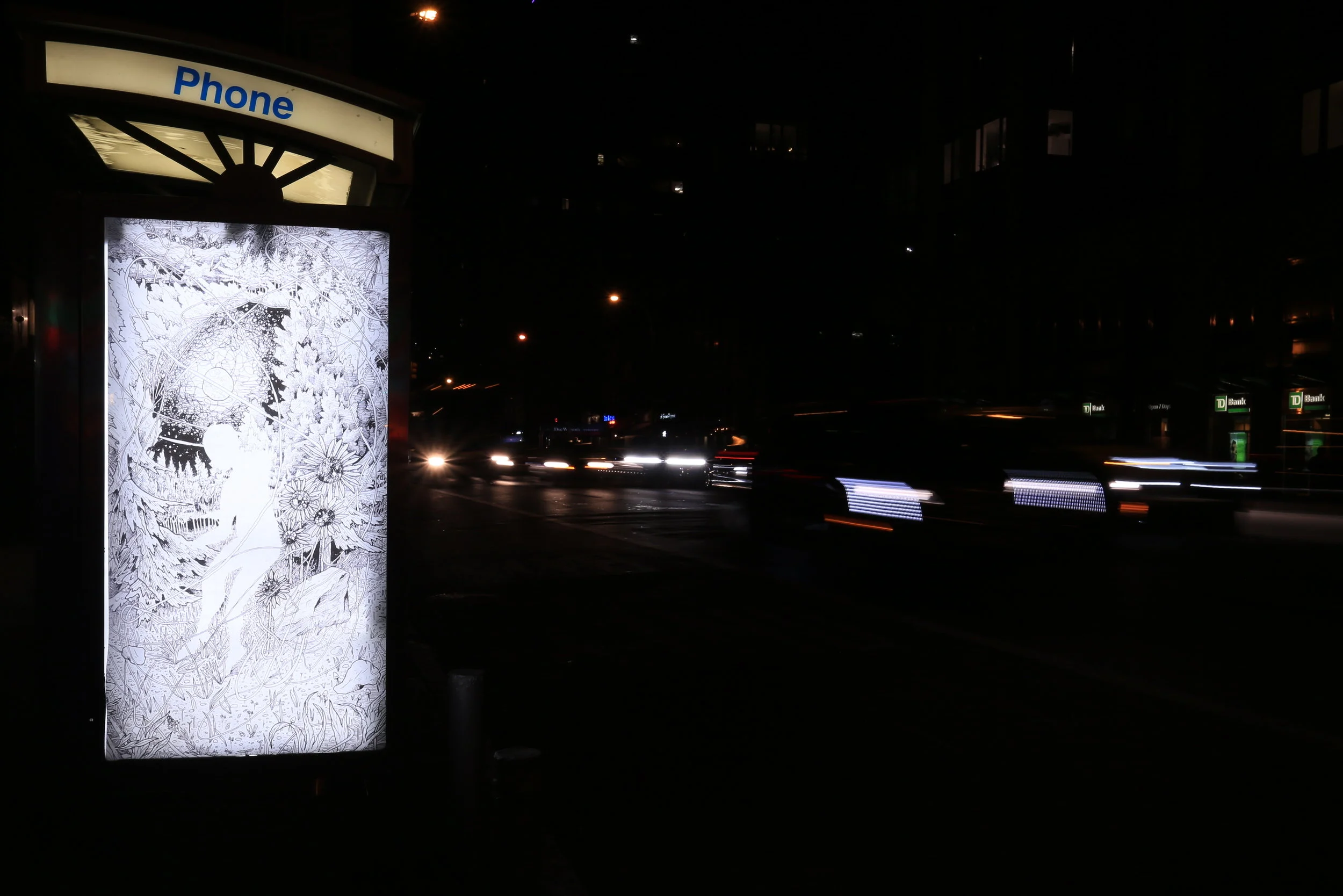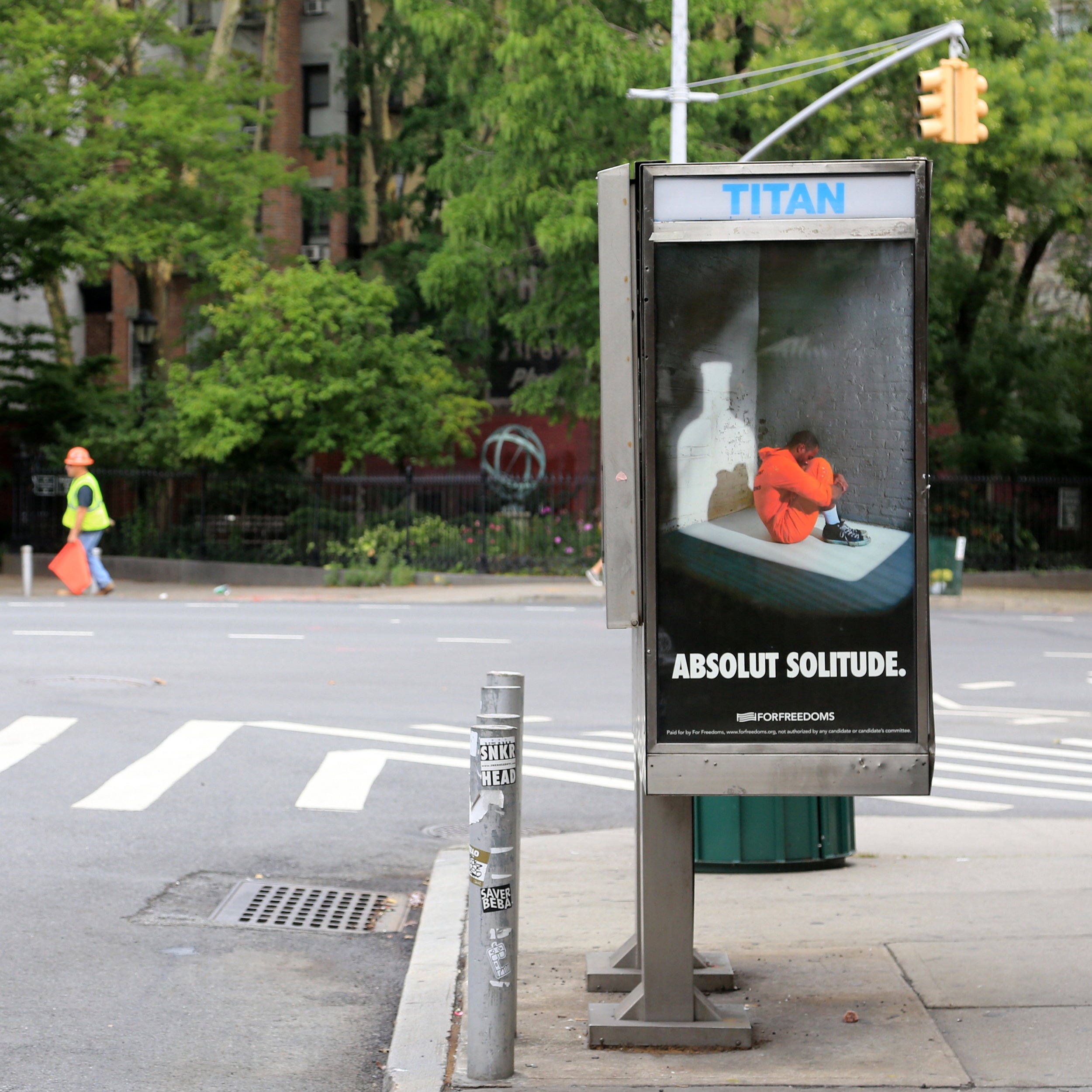For Freedoms with Hank Willis Thomas. Photo by Luna Park.
This week, we tried something a bit different. We partnered with For Freedoms, an artist-run super PAC using "art to inspire deeper political engagement for citizens who want to have a greater impact on the American political landscape," and installed one of their campaigns designed by Hank Willis Thomas (one of For Freedoms' co-founders).
Hank's is one of the most visually-striking works we've installed so far, which should come as no surprise. Hank is a master manipulator of visual messages, in a good way. He researches, absorbs, and reinterprets, often using advertising as his starting point. So he was one of the first people we thought to invite for Art in Ad Places.
In very literal way, Art in Ad Places is about framing. Hank speaks a bit about how that's at the center of his own work in this recent video with the Ford Foundation:
"Whoever is holding the frame gets to create the context." Hank is speaking about addressing structural inequality, but he could just as easily be speaking about how we utilize public space, particularly spaces used for outdoor advertising. In New York City, Intersection holds the literal frames on most pay phones, and they tell the public that those frames must be used for advertising. As a result, our baseline is that we think of those frames as places for advertising. But what if they weren't? What if we held the frame? What if we controlled the context? Hank told us, "I participated in Art in Ad Places because ads are in art places."
Touché Hank, touché. Change the frame. Change the context. And remember, if you want to hold the frame, visit our Take Action page for all the tips and tools you'll need for your own ad takeover.
For Freedoms with Hank Willis Thomas. Photo by Luna Park.










